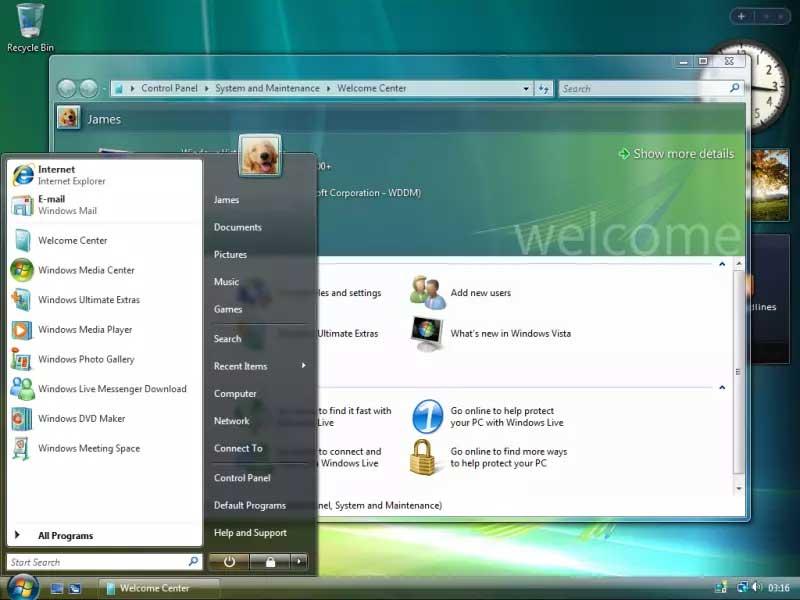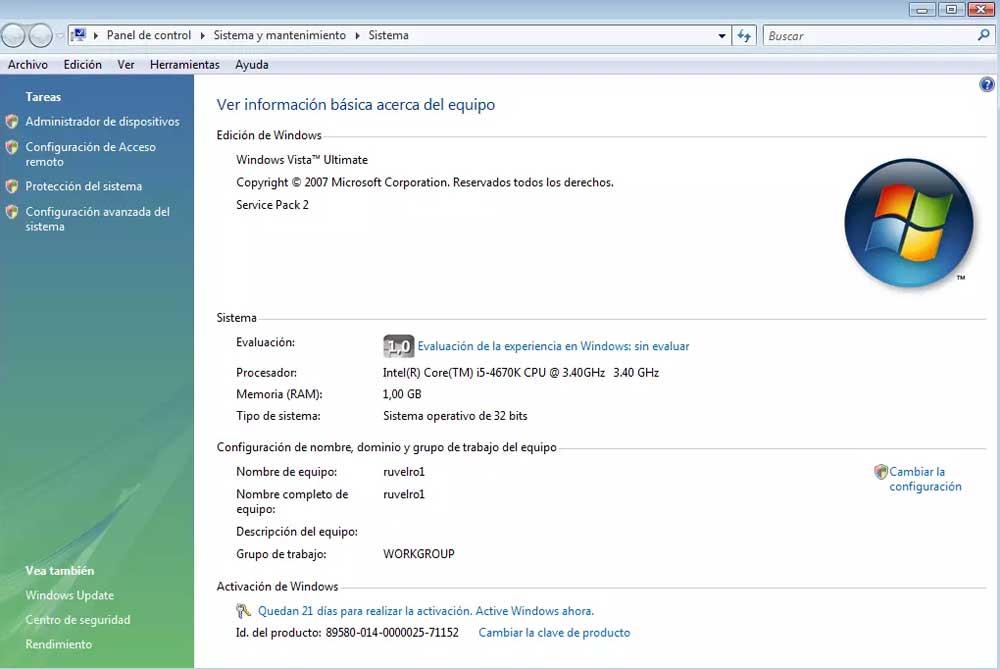The different versions and editions of Windows have been with us for decades, but not all have had the same acceptance. Next we are going to talk about a Microsoft operating system that could be considered one of the worst known of all those launched by the software giant.
We could say that Windows XP or Windows 7 are among the global favorites of most users. But there are other versions that could undoubtedly be considered a major failure on the part of Microsoft, as for example happened with the ME version or with Windows 8 / 8.1. Furthermore, in these lines we are going to talk to you about what for many is one of Microsoft’s great disasters and that came to light last year 2007, we are talking about Windows Vista.
Windows Vista did not have the best launch
If we look at the year 2007, which was when this operating system was released, we must take into account that most computers ran one of the most beloved versions of the system, XP. It had been on the market since 2001 and Microsoft announced the launch of its successor, the aforementioned Vista. Basically this means that the demands were maximum to replace Windows XP.

From its inception Vista was the victim of a controversial and criticized launch. In fact, for many this was one of the main reasons why so many stuck with XP until many years later. To all this we can add that Microsoft’s marketing for this version of its operating system was not the best. From the beginning it promised that most computers would run Vista in a short time, and also many new PCs with XP added a Windows Vista compatible sticker, when in reality this was not the case. This even earned the company a lawsuit.
High minimum requirements
And we must take into consideration that Windows Vista had minimum specifications much higher than those of the previous system. Vista required at least 1 gig of RAM, an x86 or x86-64 processor with at least a clock speed of 1 GHz, and a graphics card with at least 64 megabytes of VRAM. At the time and if we compare these requirements with the previous version, they were very high. Hence the reluctance of many to migrate to the new operating system.

In addition, there were other highly criticized aspects such as its User Account Control function. This prevented apps from gaining administrator permissions without us realizing it, which resulted in pop-ups to continually authorize or deny permissions.
Say that this function was designed to increase the security of the operating system. But in practice all it did was annoy users with pop-ups every time they tried to run something.
Vista was a Windows 7, poorly made
In case you don’t remember, and due to the lack of success enjoyed by this version of the operating system, Windows 7 was released shortly after, in 2009, and was one of the most beloved versions in history. In fact, we could say that the criticized Vista had many sections similar to the next version as part of the interface and some of its most important functions. We cannot leave aside that the beloved Windows 7 was largely based on Windows Vista. Not only that, since the same thing happens with the versions that followed until today.
Therefore we could say that Windows Vista was a highly criticized and little accepted system, but almost mandatory and necessary to reach what were the later versions. Basically by this we mean that, although Windows Vista was not a good operating system, it was an excellent help to the later Windows 7, 10 and even 11.














